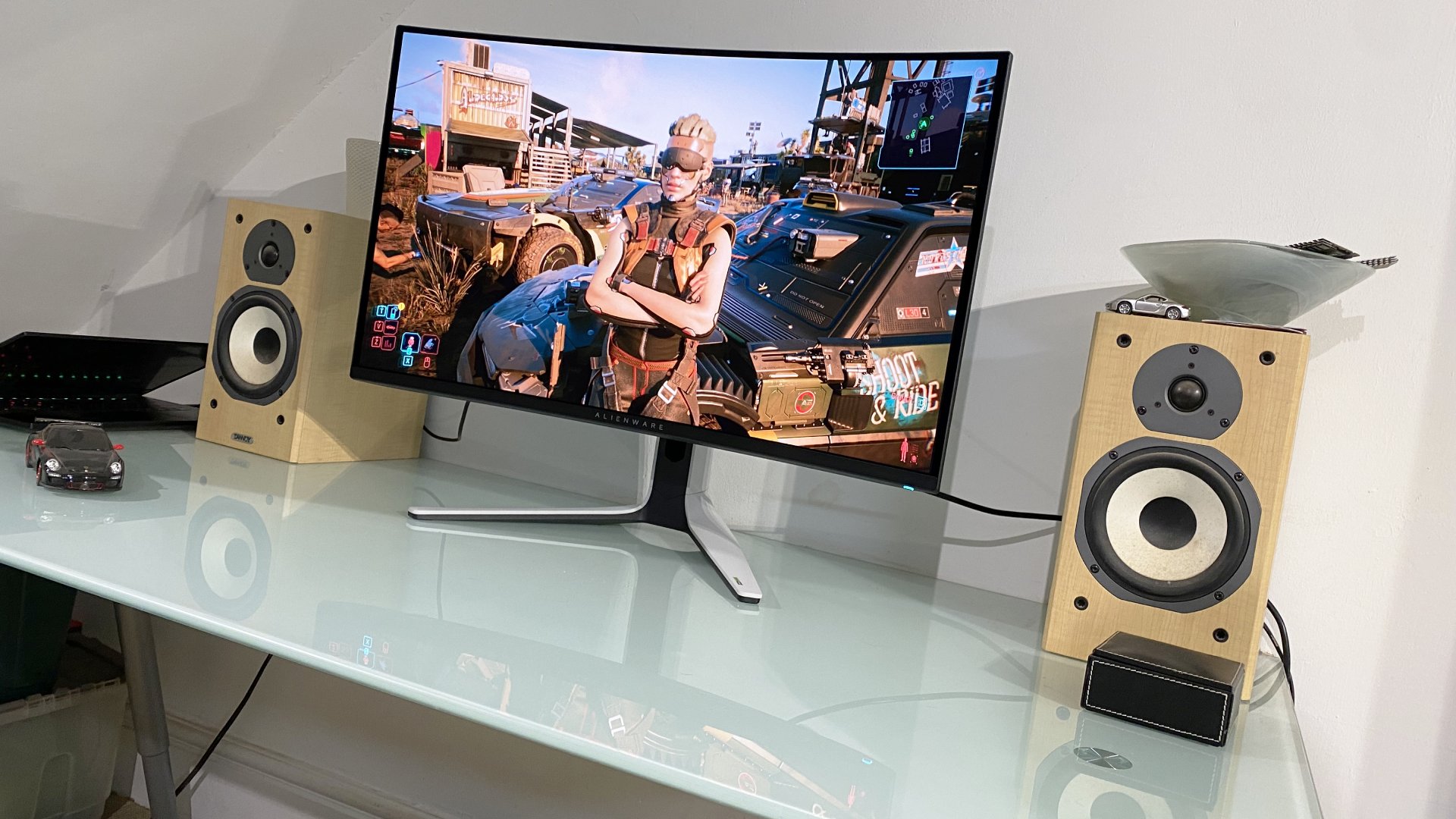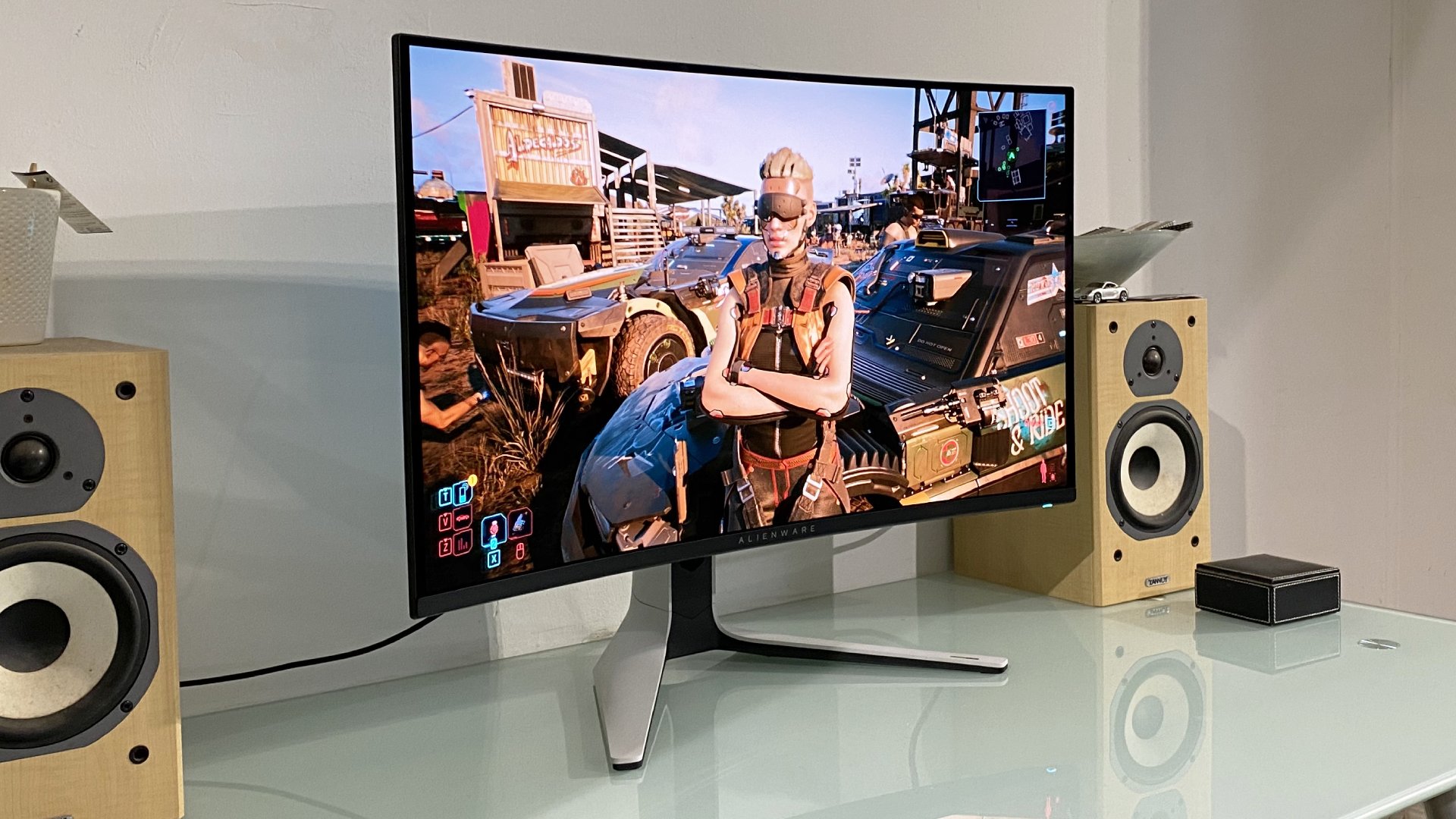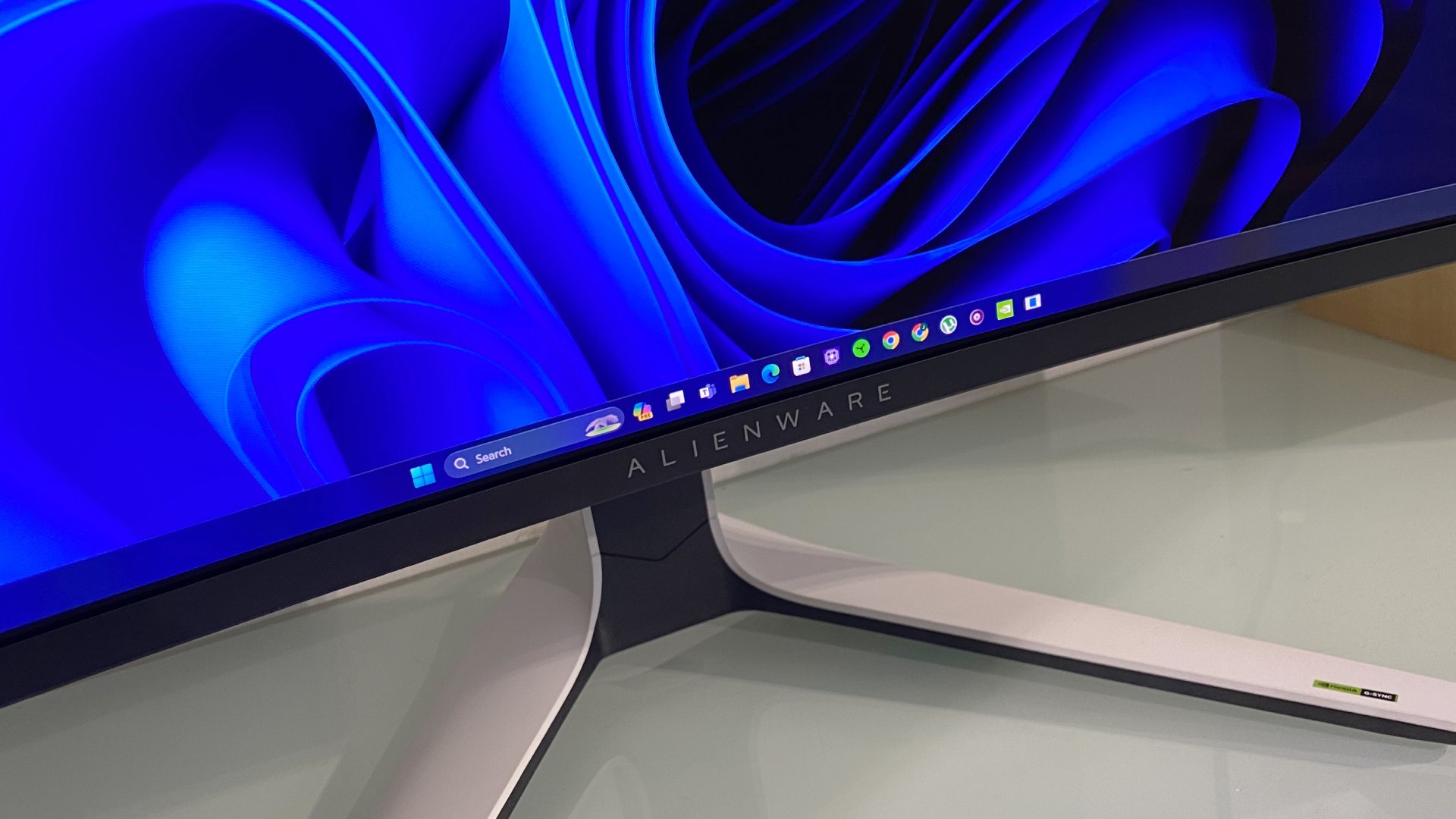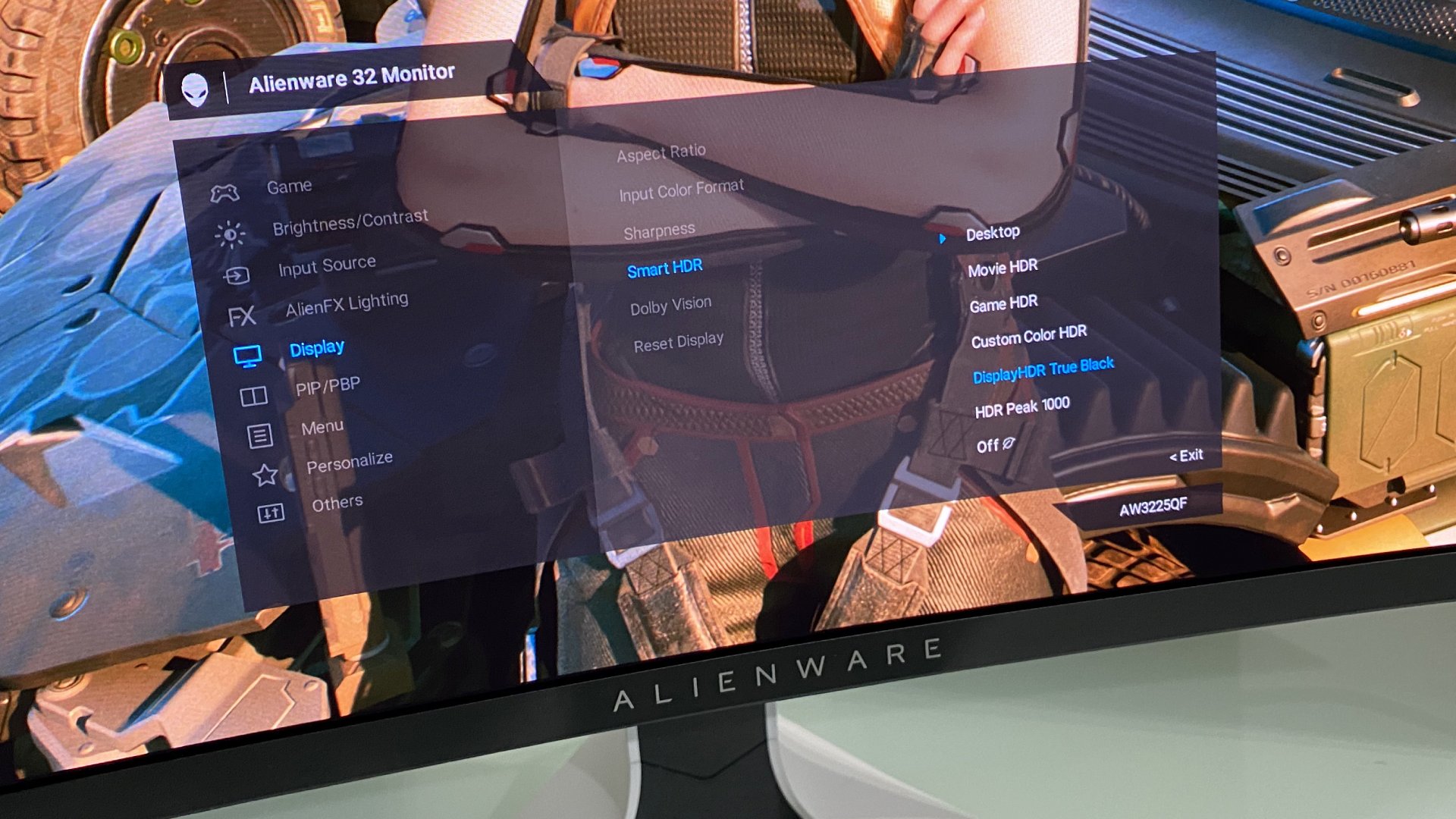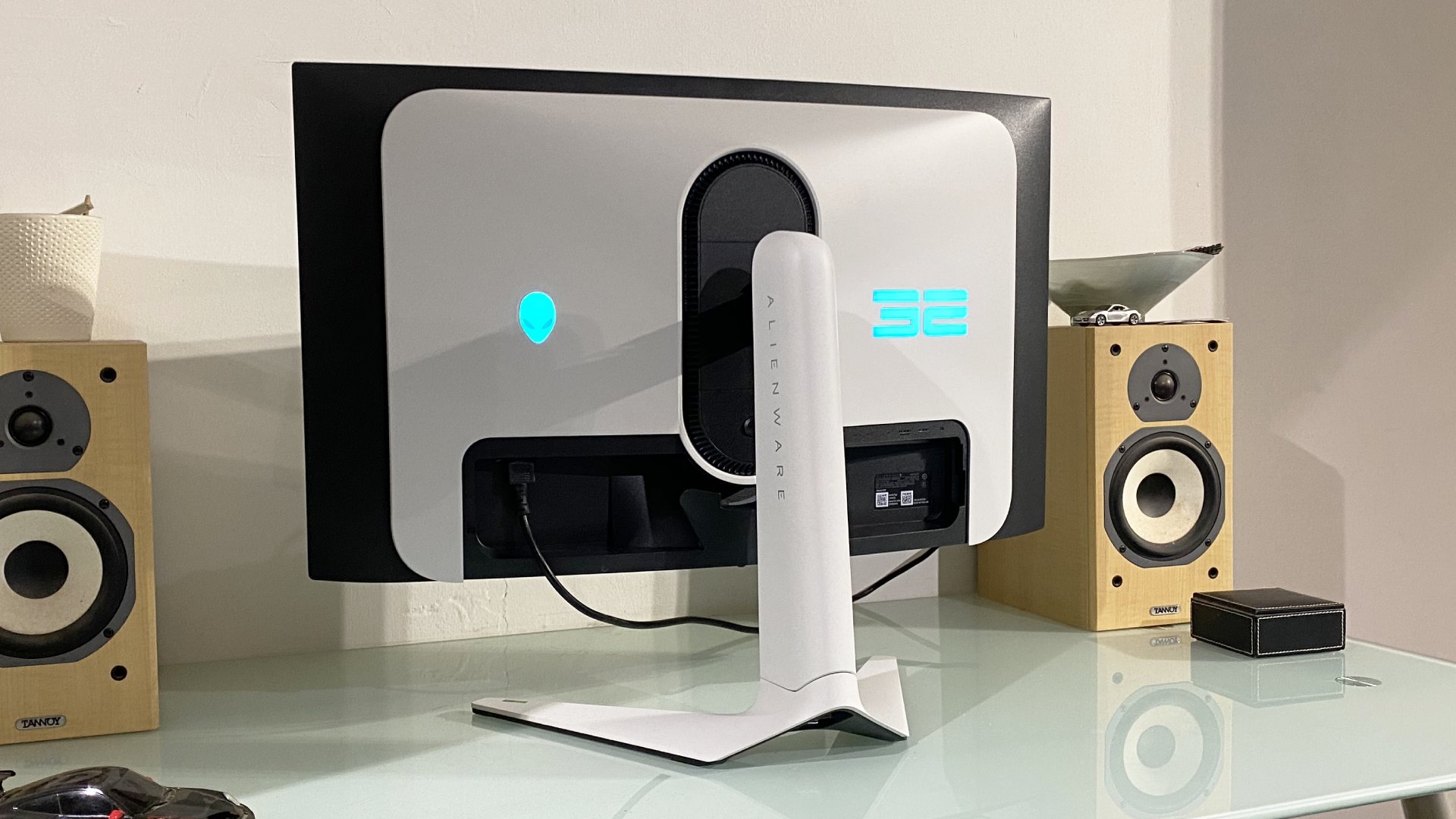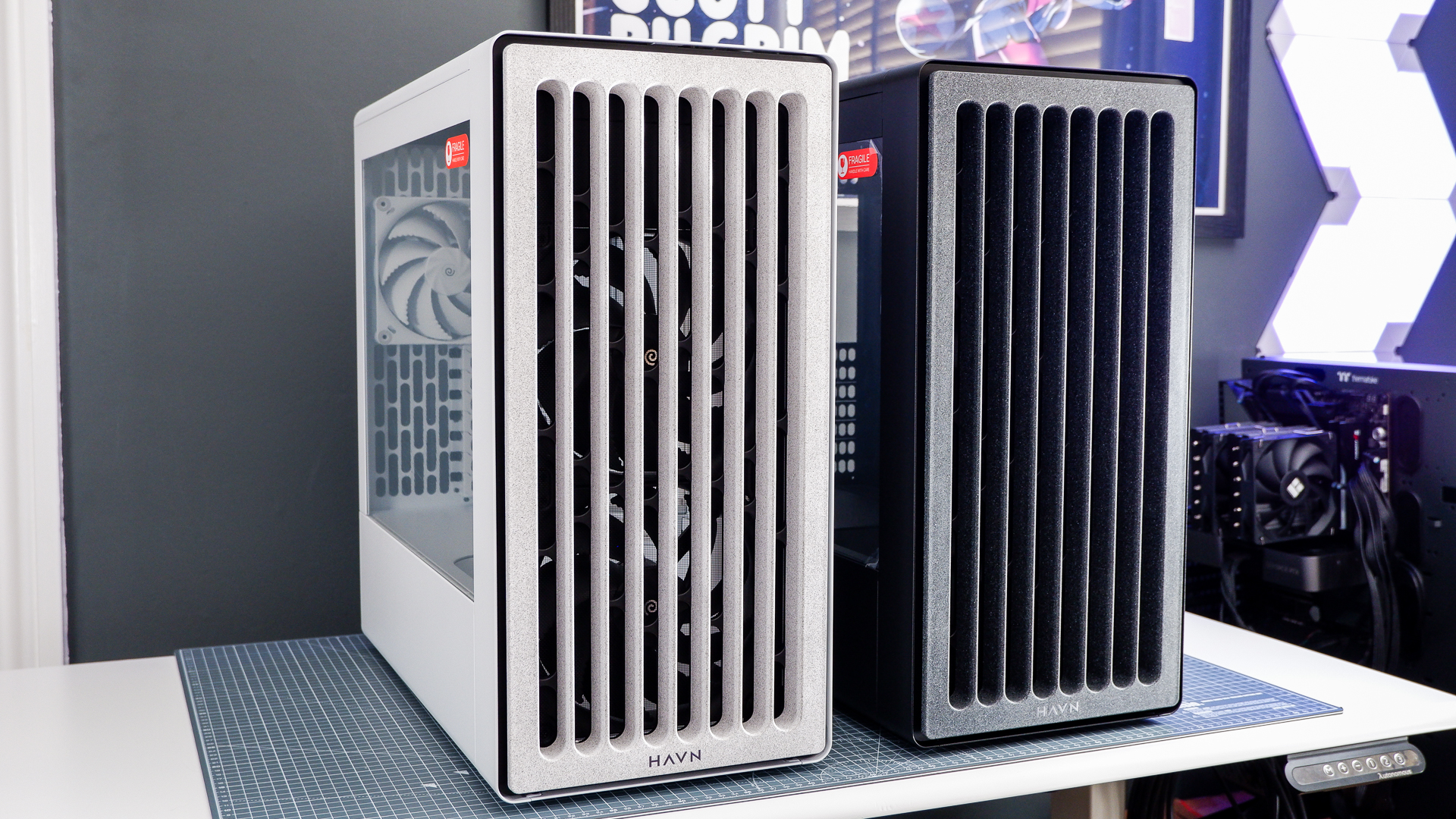Our Verdict
Our second taste of Samsung's new QD-OLED tech in 4K 32-inch form, this Alienware is an absolute stunner. But it's not cheap and it is a little complicated to live with.
For
- QD-OLED lushness
- 4K detail and sharpness
- 240Hz refresh
Against
- Painfully pricey
- Complicated to live with
PC Gamer's got your back
All new technologies come with a learning curve. And with the cataclysmically desirable new Alienware 32 AW3225QF, we're definitely learning some lessons about OLED as a display solution for PC gaming.
This is not, in fact, the first of the brave new 4K OLED generation we've sampled. A few weeks back, I cast my beady, desiccated peepers across the Asus ROG Swift OLED PG32UCDM. That's another 32-inch 4K panel running Samsung's latest QD-OLED tech, albeit with the flat option where Alienware has chosen curved. And what a stunner it was.
But as we clock up the hours with this new format, the sheer wow factor is increasingly accompanied by familiarity. And with that comes, well, a slightly more grounded sense of what these monitors offer gamers. This is an incredible display. But like its Asus competitor, this Alienware is an elusive angstrom or three away from perfection. Living with these 4K OLED panels is just a tiny bit complicated.
However, let's kick off with the basic speeds and feeds. Again, we're talking 32 inches of 4K QD-OLED glory. That matters because, until these new panels arrived, you couldn't have both OLED visuals and nice, tight pixel density. Previous OLED monitors were derived from relatively low-DPI TV panels.

Screen size: 32-inch
Resolution: 3,840 x 2,160
Brightness: 250 nits full screen, 1,000 nits max HDR
Color coverage: 99% DCI-P3
Response time: 0.03ms
Refresh rate: 240Hz
HDR: DisplayHDR 400 True Black, Dolby Vision
Features: Samsung QD-OLED 3rd Gen panel, Adaptive Sync, 1x DisplayPort 1.4, 2x HDMI 2.1
Price: $1,199 | £989
For this 4K option, Samsung has invoked a new ink-jet printing technique to pack 4K into a 32-inch panel. LG has its own 32-inch 4K offering incoming, but retail availability of monitors using that panel are a few months behind the Samsung QD-OLED. Watch this space for coverage of the LG alternative.
Anyway, despite the new manufacturing technique, the specs look familiar. Response is rated at 0.03 ms, peak HDR brightness at 1,000 nits, full screen brightness at 250 nits and colour coverage comes in at 99 percent coverage of the DCI-P3 gamut. That's all pretty much identical to existing QD-OLED monitors based on the earlier low-DPI panel stock, like the 34-inch ultrawide Alienware AW3423DWF.
The subpixel structure also remains the same. In other words, it's still not a conventional RGB stripe, but a triangular RGB arrangement. That mattered in the past for sharpness and font rendering, because Windows addresses monitors under the assumption of the RGB stripe.
Keep up to date with the most important stories and the best deals, as picked by the PC Gamer team.
But with the increased 140 DPI density of this new 32-inch 4K class of OLEDs, it's no longer an issue. Yes, if you look very, very closely you can just see some text fringing. But in normal use it vanishes. Fonts look nice and crisp.
The other headline feature is the 240Hz refresh, of course. Obviously you'll need one heck of a GPU to feed all those pixels at 240Hz. It's worth noting that LG is promising a 1080p 480Hz mode for its 32-inch 4K panel using integer doubling to achieve supposedly native-quality 1080p pixel definition on a 4K panel. It'll be interesting to see how that pans out, though all previous attempts at integer doubling to achieve lower resolutions have ultimately not delivered on the claimed "native" experience.
Other features of note include DisplayPort 1.4 plus two HDMI 2.1 connections and a USB hub. What you don't get is USB upstream for video input or laptop charging. Nor is there an audio out for connecting headphones or speakers, which is a slightly odd omission. It likewise lacks the KVM switch of the Asus competition.
Rounding things out are a dash of the usual AlienFX RGB lighting and Alienware's signature aesthetic, with the familiar Storm Trooper-style white cladding on the rear of the chassis. I'm not a huge fan of the look. But it's nicely slapped together and a bit more resolved than the hard-edge, dated and adolescent Asus alternative.
If that covers the look of the hardware, what about the image quality itself? No surprises, it's a stunner. The triple whammy of perfect per-pixel OLED lighting with 4K pixel density and a glossy panel coating is to die for.
To achieve the brightest SDR results, you actually have to enable HDR.
Notably, in SDR mode there's no brightness variability at all. You can jiggle around or resize windows as much as you want, the brightness stays pegged at the same 250-nit level. That's good because the variability on some OLED panels can be very distracting. Early LG OLED monitors suffered really badly, with brightness nose-diving if you dared to maximise, say, a mostly white browser window.
That said, the Alienware 32 AW3225QF has even more pop in HDR mode. And that applies to SDR content, too. To achieve the brightest SDR results, you actually have to enable HDR, and then max out SDR brightness in the Windows display settings tool.
That achieved, you will then notice some panel brightness variability when resizing windows and the like. But it's only slight and you really have to look for it to notice. Whatever, that's not the only little foible you need to be aware of.
The Alienware 32 AW3225QF gives very, very different results depending on which of the no fewer than nine HDR modes you choose. There are six of what you might call conventional HDR modes, plus three Dolby Vision HDR modes.
If anything, the calibration feels even punchier here than the same QD-OLED 4K tech does in the Asus ROG Swift OLED PG32UCDM.
It's all a bit baffling, to be frank. Making matters worse, when switching between some, but not all, of the HDR modes, the display may resync with your PC. For starters, that takes time which makes it harder to make a comparison and choose between modes. It also kicks you back to the desktop if you're in game, which can cause some titles to crash. What a palaver.
Then there's the fact, for instance, that the HDR 400 mode looks best for outdoor scenes, but crushes details for darker indoor and nightime game scenes, while HDR 1000 looks utterly spectacular for the latter, but rather dull for brighter images.
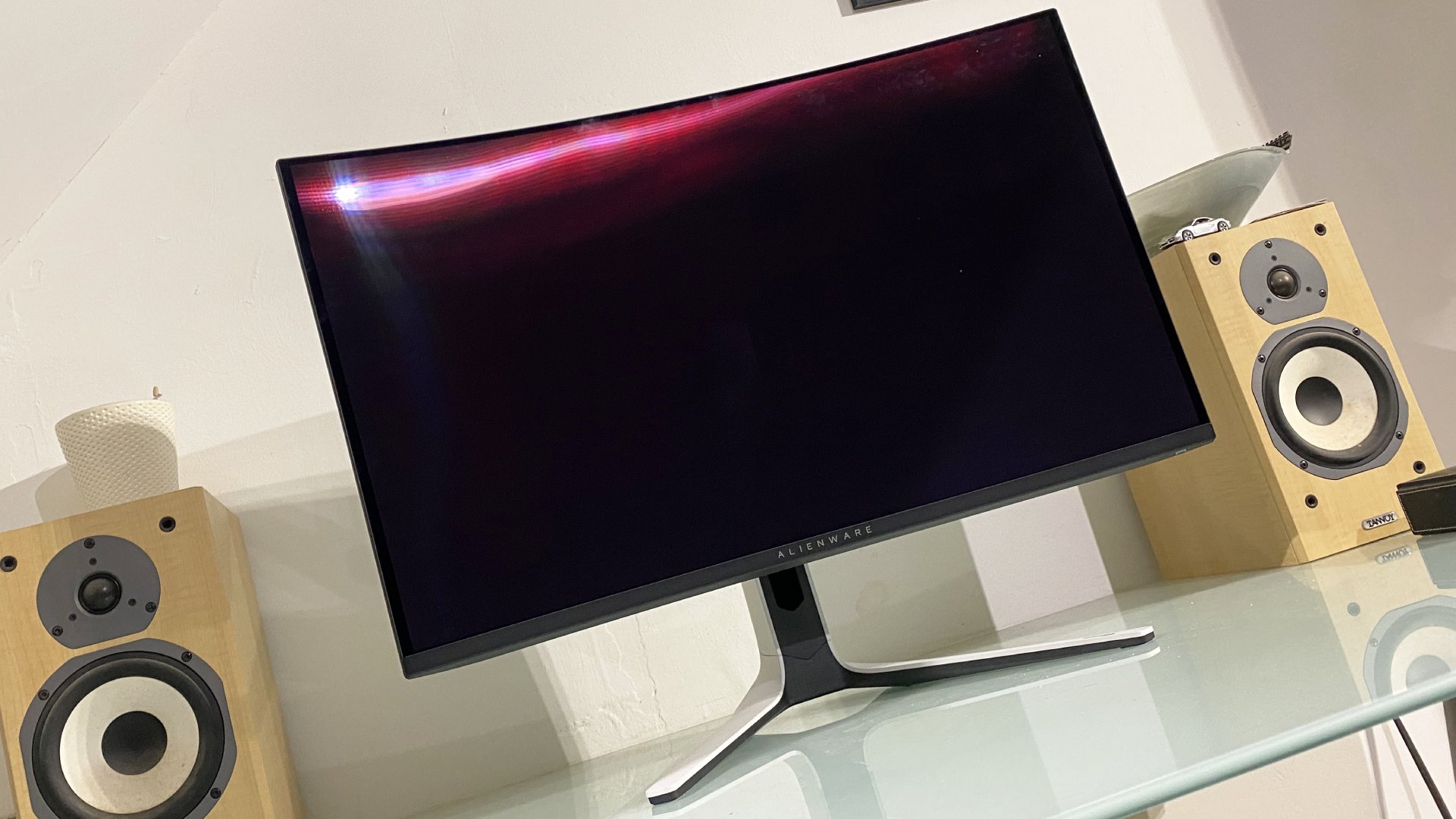

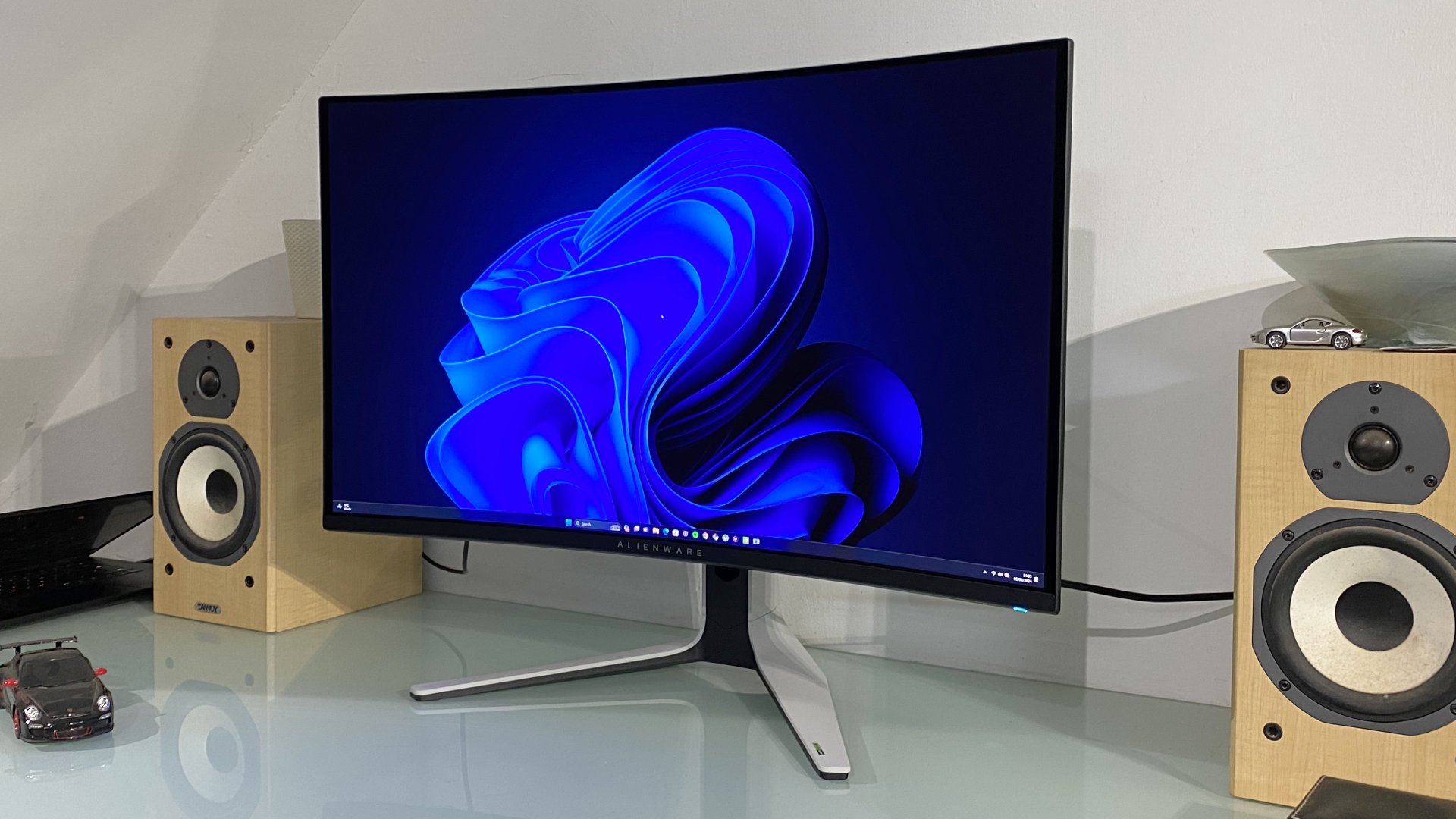

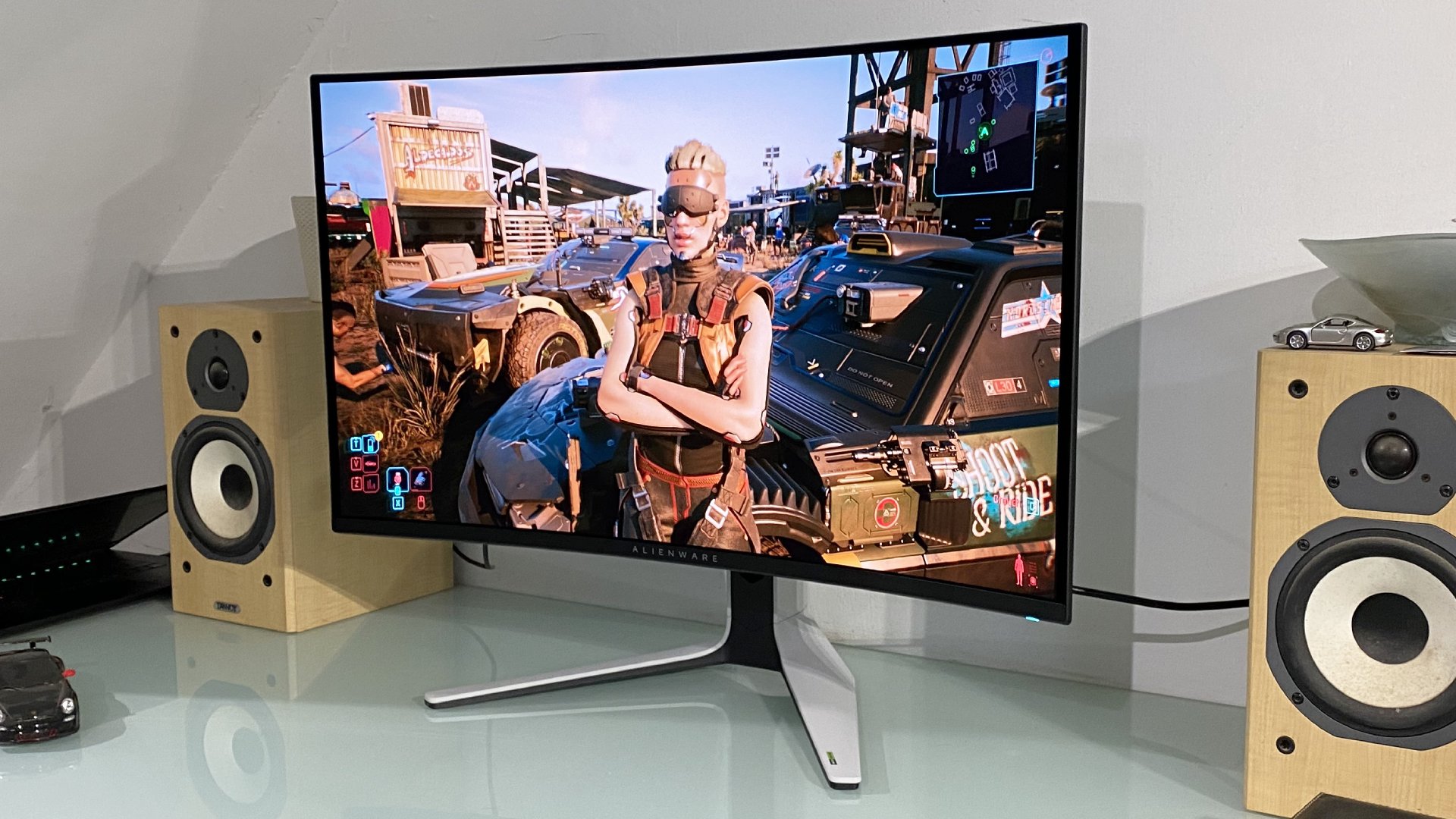
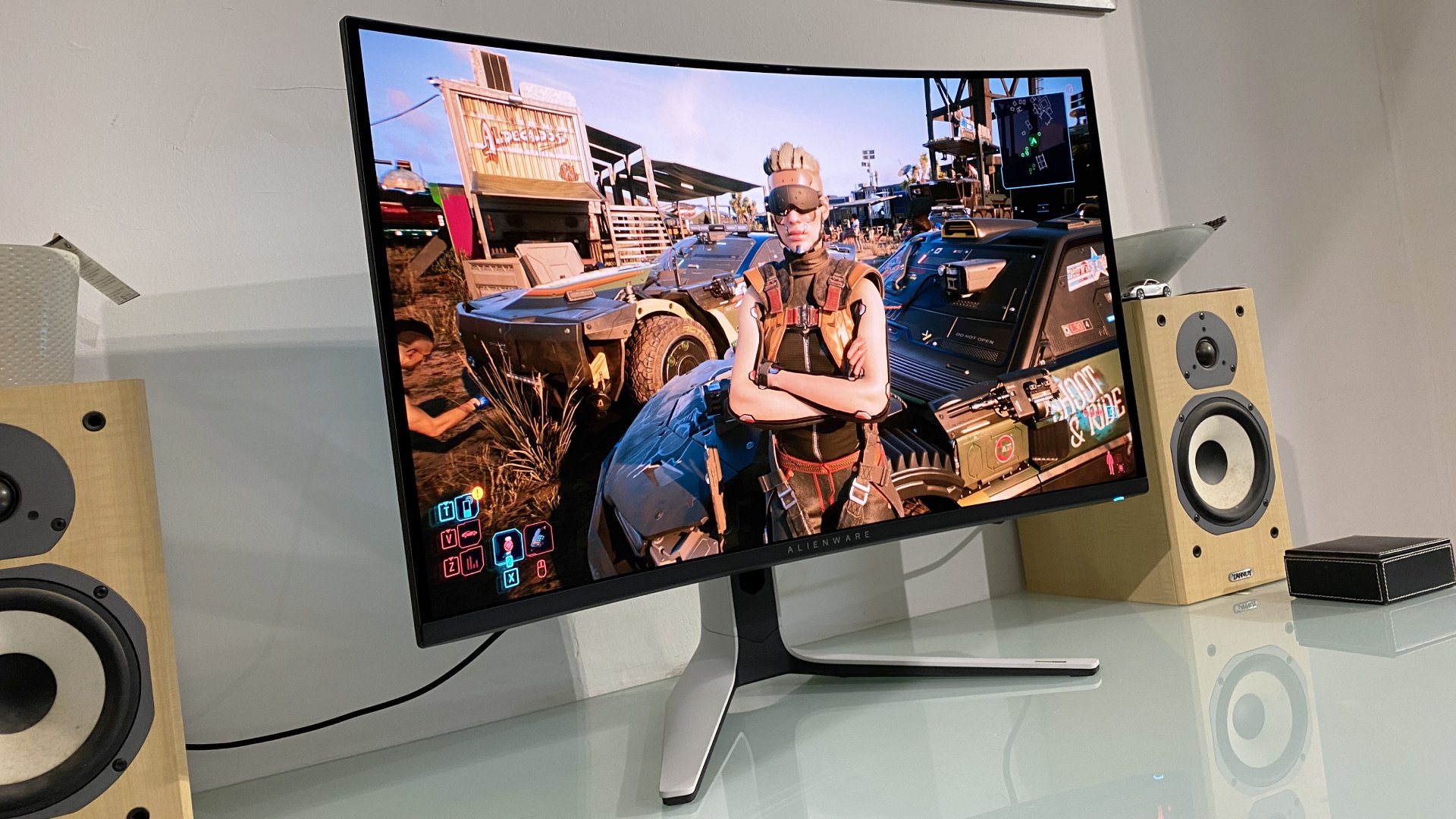
In other words, there's not a single optimal setting for HDR. It depends on the game you're playing and even the scene in question. That's arguably true for any display. It's just that much more acute here.
All that said, this panel still positively rocks. If anything, the calibration feels even punchier here than the same QD-OLED 4K tech does in the Asus ROG Swift OLED PG32UCDM. I don't even mind the slight panel curve, something that normally feels a but redundant on a 16:9 as opposed to an ultrawide monitor.
As if all that wasn't enough, you also have to contend with the whole OLED burn-in thing. Alienware covers the panel for burn-in for three years. So, that's a decent chunk of reassurance. But you still have to put up with burn-in mitigation measure prompts popping up now and then and generally stress over whether you should be toggling the "Pixel Refresh" or "Panel Refresh" protection algorithms.
Put it this way, life was a whole lot simpler with an SDR LCD monitor, that's for sure. The upside, of course, are visuals that no LCD display can match, not even the latest and greatest IPS models with full-array local dimming.
The contrast this Alienware delivers is just awesome. There's a scene in Cyberpunk 2077 with an underground bar that's plastered with neon strip lights and signage. On this monitor, it really does look like those neon lights are real. They absolutely pop out of the panel, while the pixels around them remain inkily, effortlessly black.
Then there's the bonkers-fast pixel response. There's a clarity to movement on these OLED screens that LCD panels can only get close to with backlight strobing. And backlight strobing does horrible things to brightness and colours.
✅ You want the combined glory of 4K crispness and OLED lighting: Perfect per-pixel lighting, incredible OLED speed, plus 4K pixel density is an incredible combo.
❌ You want a simple life: What with all the HDR settings and the OLED panel management, life isn't simple in 4K OLED land.
So, this is undoubtedly a seminal gaming experience. It's as good as 16:9 gaming currently gets. The increased pixel density also means this, along with its Asus nemesis, is the first OLED gaming option that also makes for a great all-round PC monitor. The pixel density is finally there, as is the full-screen brightness.
Of course, if you prefer the ultrawide gaming experience, and we're with you if you do, then the 16:9 aspect may feel just a bit dowdy. For instance, you can actually get Samsung's epic 49-inch ultrawide OLED G9 panel for less money. It's not as good an all rounder, but it feels like a lot more monitor for the money.
In an ideal world, there would be a 5K2K ultrawide OLED option. At which point, you could arguably put the whole gaming monitor thing to bed. The latest roadmaps imply that is indeed coming. But in the here and now, and despite the slight complications, this is as good as OLED gaming gets.
Our second taste of Samsung's new QD-OLED tech in 4K 32-inch form, this Alienware is an absolute stunner. But it's not cheap and it is a little complicated to live with.

Jeremy has been writing about technology and PCs since the 90nm Netburst era (Google it!) and enjoys nothing more than a serious dissertation on the finer points of monitor input lag and overshoot followed by a forensic examination of advanced lithography. Or maybe he just likes machines that go “ping!” He also has a thing for tennis and cars.
